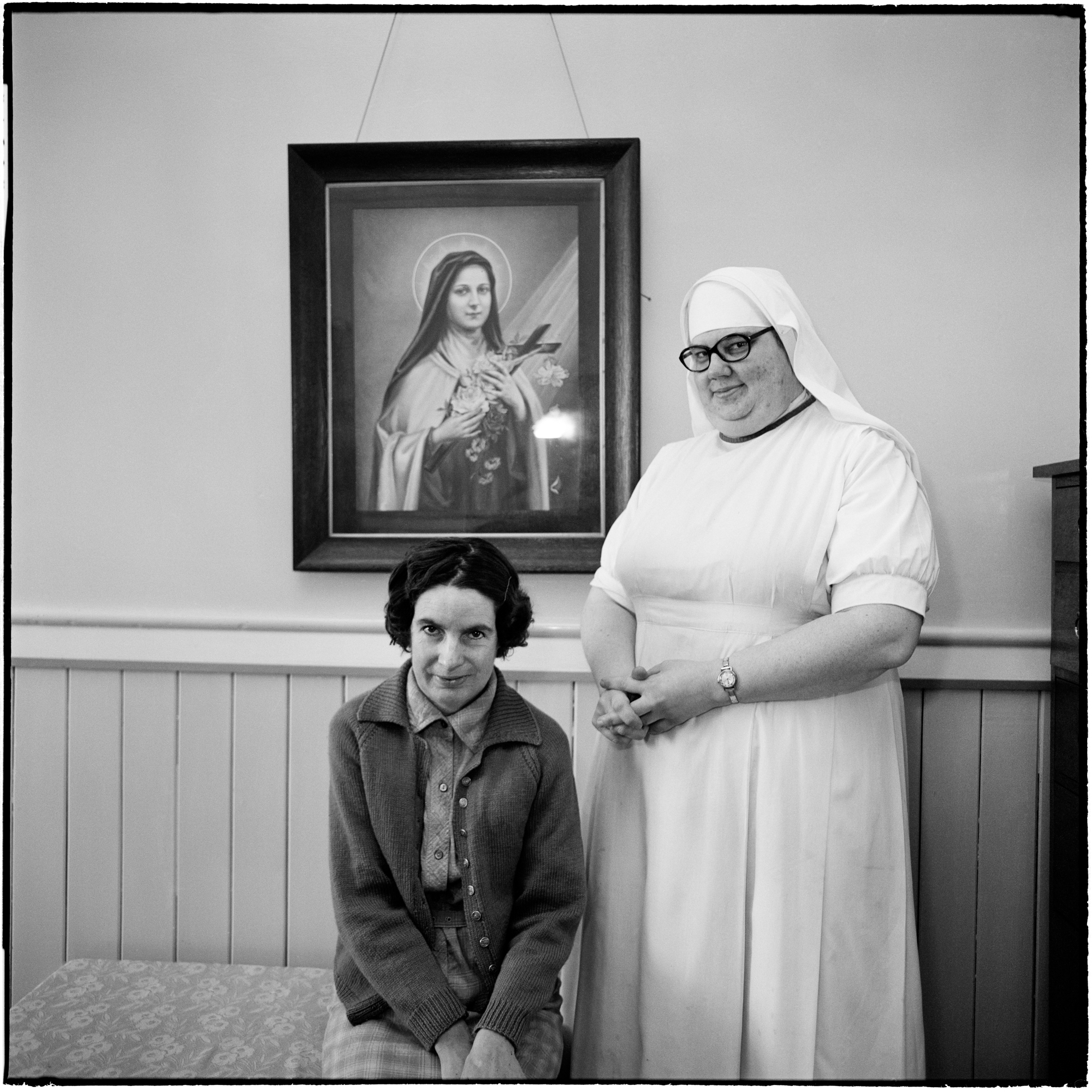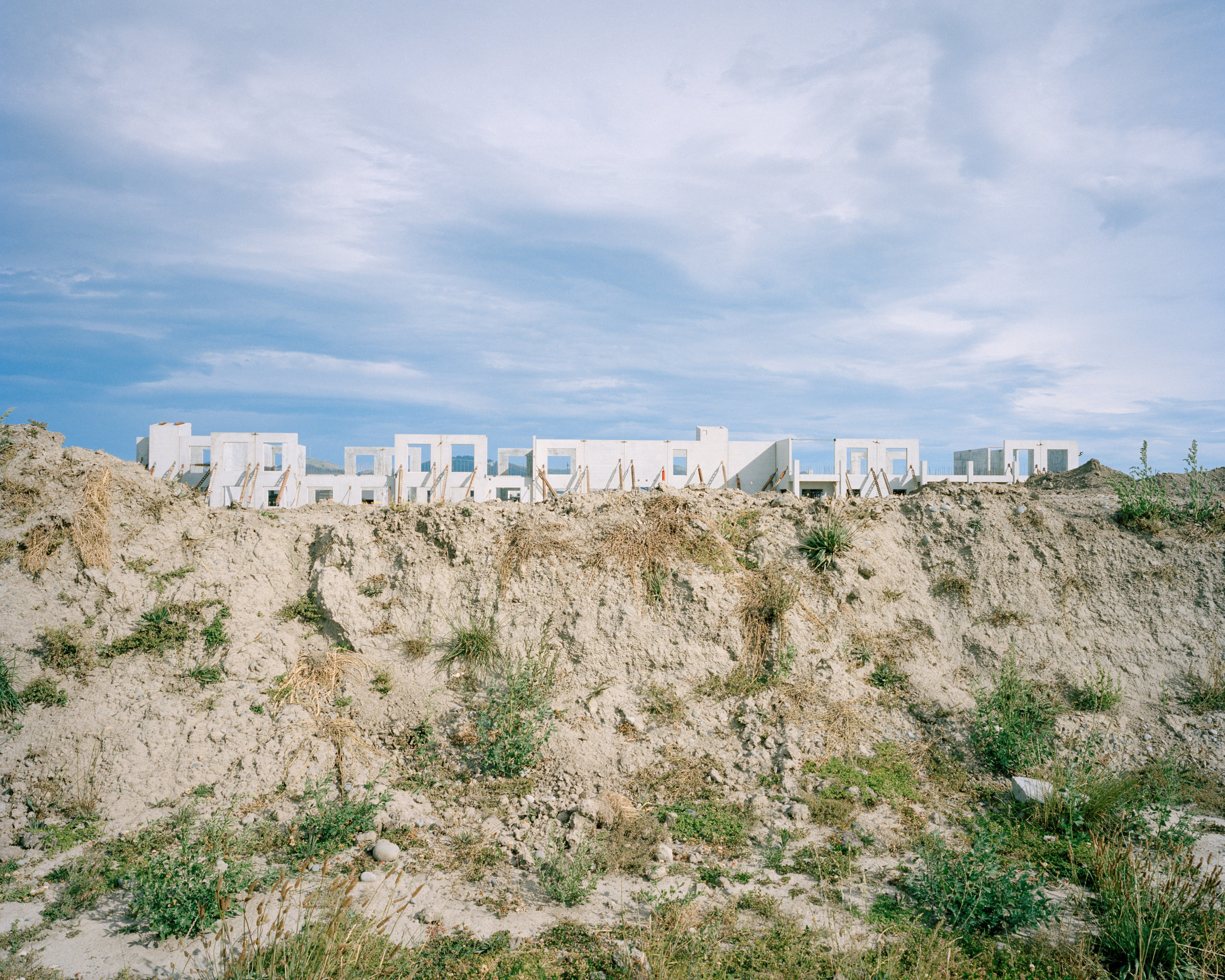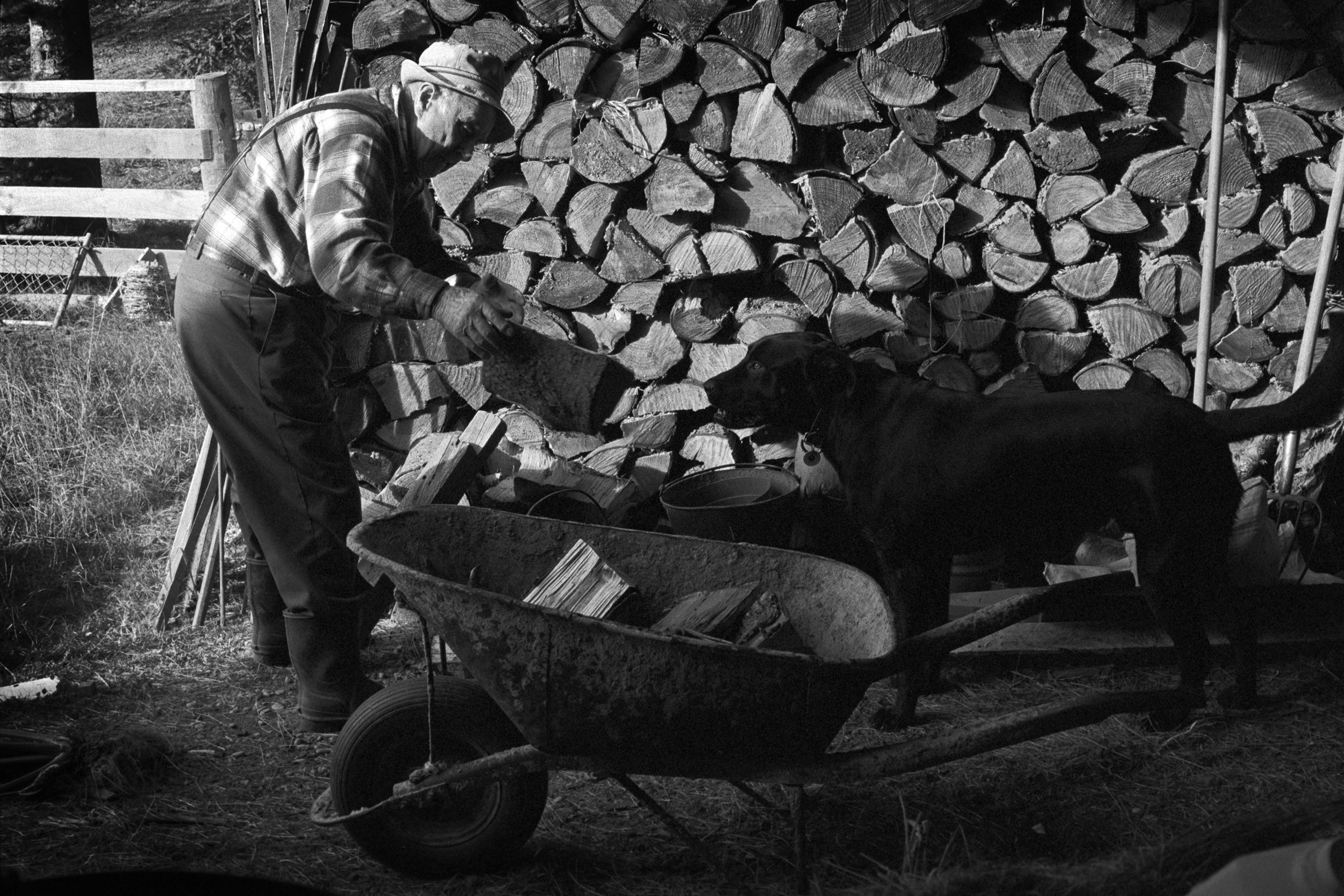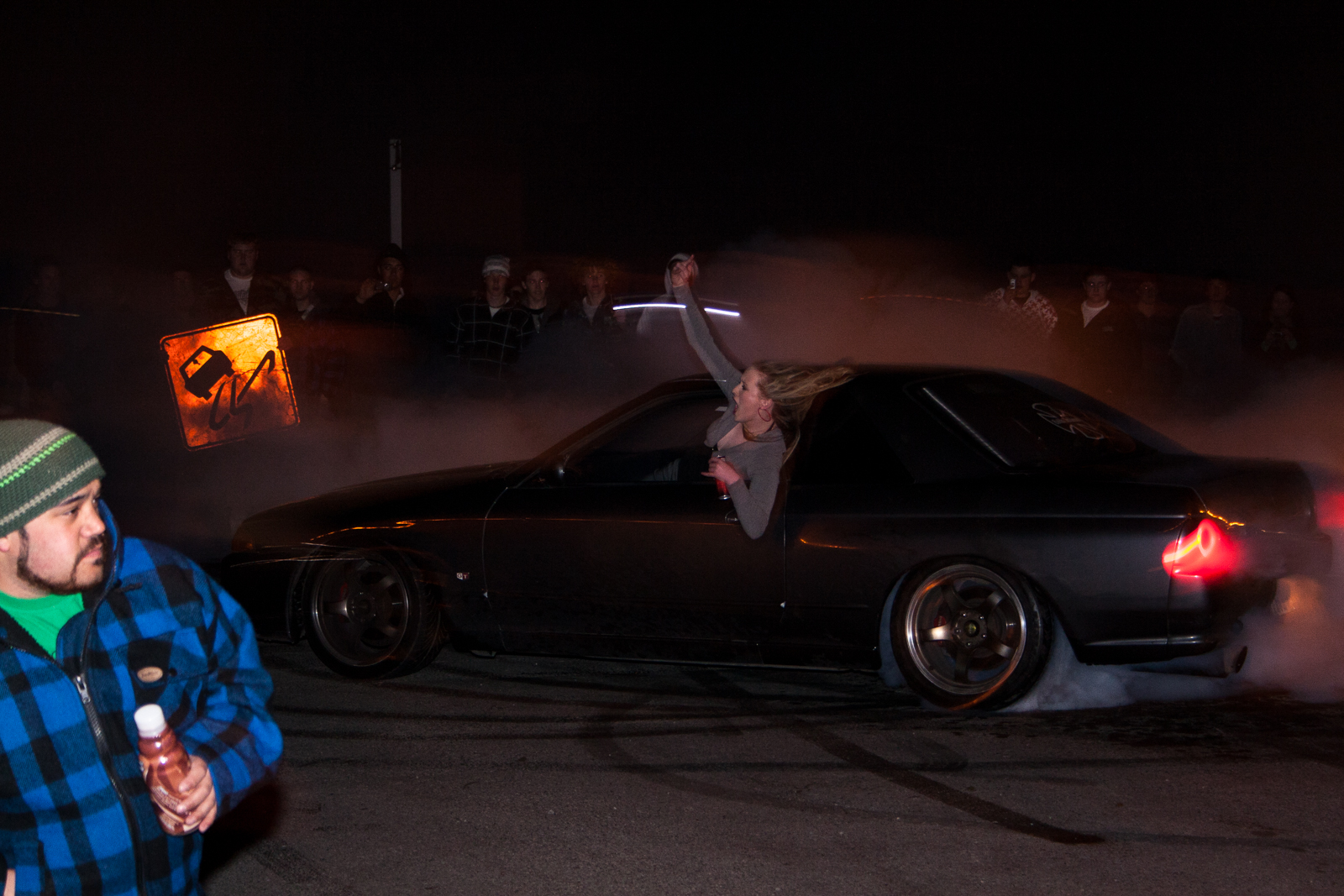Place in Time - website launch
Place In Time: The Christchurch Documentary Project
Article by Tim J Veling and Glenn Busch for PhotoForum, January 2019
Tim J Veling, Demolition of Crowne Plaza Hotel from Adaptation.
Place in Time is a magnificent archive of documentary projects about Otautahi Christchurch by students and staff of the Ilam School of Fine Arts. In 2019 a comprehensive website was launched, making the work accessible to the world. To mark the occasion, founder and former Director Glenn Busch and current Director Tim J Veling, wrote a feature about the Place In Time journey.
When esteemed documentary photographer and writer, Glenn Busch established Place in Time: The Christchurch Documentary Project in the year 2000, he couldn't have predicted events of 2010 and 2011 that changed the physical environment and social fabric of Christchurch forever.
Motivated by international precedents such as Mass Observation (UK) and the Farm Security Administration (USA), Glenn first actively explored the idea of establishing a New Zealand initiative with two friends, John Orbell a political scientist and the photography lecturer who preceded him at the Ilam School of Fine Arts, Larence Shustak. Their idea was to help facilitate and commission documentary work across all of Aotearoa, New Zealand, and to host a publicly accessible archive of this work.
Glenn Busch, Untitled.
In the tradition of the international archives, Glenn and his two colleagues believed strongly in both the artistic and social-political currency of in-depth documentary work. In a fast changing and increasingly globally connected world, they planned the framework for a documentary initiative that would contribute towards increased perception, appreciation and tolerance of our country’s various cultures and our social environment.
They managed to interest the then Prime Minister, Norman Kirk, and a few of his cabinet ministers in funding to help set up the ongoing project, but with Kirk’s sudden passing in 1974, potential grants and political endorsement disappeared. Their idea was shelved, although not forgotten.
Christchurch focus
In the late 1990’s, with major technological advances such the rise of the internet, relatively cheap digital storage and affordable but high-quality film scanning equipment, Glenn sensed the time was finally right to work towards realising his vision. The scope of the project was refined however, with a new imperative to concentrate on the local instead of national, commissioning and archiving of work about Christchurch and its surrounding areas. The thinking was it would help focus Glenn’s energy and resources, as well as better integrate into the strong documentary programme he'd advanced within the photography studio at the Ilam School of Fine Arts (Ilam).
Glenn’s students had long produced excellent work about the world around them, especially fourth year and post-graduate students who had the luxury of developing long term projects over an entire academic year, but very little of it was seen outside of one-off student events, short run artist books and exhibitions.
Elise Williams, from 64.
To refine his ideas for the newly envisaged archive, Glenn first ‘road tested’ documentary project ideas that might fit with students in the undergraduate programme, organising groups of photographers into areas across Christchurch’s suburbs and central city streets. Along with the photographic education inherent in the work there was a strong emphasis on the ethics and responsibility when it came to involvement in the lives of others.
Early assignments
Kirsty MacDonald, from Colombo Street 1992.
One of the earliest examples of these assignments was an in depth look at Colombo Street, Christchurch’s main road that runs straight for six kilometres from the foot of Cashmere Hill, through the CBD and Cathedral Square, all the way to Edgeware Road. Undertaken in 1992 by students studying in the third year of the photography programme, the resulting work formed the basis from which the Place in Time archive would later grow.
In 2002 then fourth-year student, Uiga Bashford revisited the same stretch of road and re-photographed many of the same scenes for her graduating project. In her images the city is pictured in the early stages of an economic slump, the result of suburban mall expansion and a dwindling population of office workers inhabiting CBD buildings after widespread corporate restructuring.
Uiga Bashford, from Colombo Street 2002.
While both of these projects initially shared the simple aim to document the ‘here and now’; to make visible a cross-section of life on a stretch of road in one place at different points in time, it’s impossible now to not look at these images without a sense of nostalgia and, for many of us, a profound sense of grief. They speak eloquently about a place that's almost impossible to reconcile with the present form of the CBD, especially the constructed and social environments that no longer exist. These projects are two early examples of the longitudinal nature of work within the larger Place in Time archive as it's grown over subsequent years.
Christine McFetridge, from The Winter Garden.
As it now stands, the archive has over 50 long-form bodies of photographic work made by students, staff and associates of Ilam, plus a huge cache of oral history material written primarily by Glenn. Projects collected range from intensely personal auto-biographical and biographical accounts of life in and around Christchurch; to long form documentary studies of people, places and issues of regional and national interest, to more poetic and introspective meditations on the world we live in. By 2010 – the year of the first Christchurch earthquake – Place in Time had initiated and facilitated the publication of five books and mounted over twenty exhibitions, almost all of them accompanied by public educational workshops attended by primary and secondary school children from across Canterbury.
Thomas Herman, from Between Hope and Doubt.
Hannah Watkinson, Pike River Mine Memorial 2015 from The Near Future.
A website and earthquakes
Around this time the New Zealand Centre of Photography – an organisation founded in 1985 by Brian Brake, Matheson Beaumont and Brian Enting dedicated to showcasing the photographic medium – invited tertiary-level creative arts institutions across Aotearoa to apply for a substantial one off grant to help realise projects and initiatives that would substantially enrich the teaching and public appreciation of photography at local and national levels. Working within Ilam, Place in Time submitted a proposal to:
· build a substantial website to showcase archived plus ongoing projects
· create a modern, publicly accessible online resource for students and educators to further their knowledge and appreciation of the value of photography as a means of artistic expression and communication of everyday realities
· further commission and collect new work.
The application was successful and initial design and planning was quickly undertaken. However, before any outcomes could be realised things were interrupted by the Christchurch earthquakes. Because of the widespread and rapid change in the Canterbury region, energies were diverted to new projects capturing things across the city before they disappeared and new infrastructural and suburban developments altered the landscape forever.
Bridgit Anderson, from Caring for the Dead.
One such project is Transitional Landscapes by Mitchell Bright, a project about Selwyn district, south of Christchurch city. One of the fastest growing districts in New Zealand both in terms of residential and commercial development, Bright was drawn to photograph the area he grew up in and knew intimately. The construction of the new southern motorway resulted in land being carved up and redeveloped to accommodate population growth and people displaced from Christchurch’s earthquake damaged eastern suburbs.
Feeling an ever-increasing sense of alienation within the place he's always called home, Bright’s images reference historic traditions of topographical photography and land surveying. (For example, the New Topographics: Photographs of a Man Altered Landscape exhibition, George Eastman House, NY, 1975.) They also subtly allude to the Canterbury Landscape painting tradition typified by Bill Sutton, Rita Angus and Rata Lovell-Smith. With Traditional Landscapes Bright adds his own voice to these traditions; his dry wit, eye for detail and awareness of the nuances of Canterbury light, help inspire awe about human endeavour in parallel to natural beauty, and simultaneous pessimism and distrust at the wasteful and unsustainable nature of such rushed and arguably ill-conceived development.
Other projects entered into the archive during this time include As the Road Bends, an intimate and poetic account of Blair Barclay’s grandfather as he tends to his West-Canterbury farm during the final years of his life; Smoke Signals by Matthew Patterson, a series about ‘car enthusiasts’ aka ‘boy racers’. Photographed during 2008, the work follows a group of men and women as they cruise the city streets, burning rubber out the back of the Christchurch Airport and the old Hoyts 8 carpark on Moorhouse Avenue, and socialise and work on cars within garages across the city.
Matthew Patterson, from Smoke Signals.
In contrast to the masculine and loud environments depicted by Patterson, Arabella Spoors’, Blood Lines, is a personal and quiet meditation on her own whakapapa and places of significance to tangata whenua primarily in the Canterbury region. Consisting of images and text as well as a diaristic type artist-cum-scrapbook, her ongoing project gives insight not only into Spoors’ familial origins, but also reveals aspects of social and cultural history and narratives that contemporary Otautahi Christchurch is built on.
Arabella Spoors, from Bloodlines. Former St Luke's Church site and urupä of Waitaha Chief Tautahi of the Puari pä.
Ellie Waters, Carving Hut in Rewi Couch's Garden from Ko te whanga ko au; Ko au ko te whanga.
In 2017 Haruhiko Sameshima was commissioned by Place in Time and Ilam to spend three weeks photographing the state of Christchurch’s central business district rebuild and to engage with students within the photography studio. During this time he spent many hours with his 8x10” Deardorff camera, anticipating the light as it might fall on patches of land not seen bare since the very early years of the 20th Century; marveling at new public space developments that would not have been possible within the old makeup of the city, and reflecting on the parallels between the Christchurch rebuild and the extraordinarily widespread demolition and redevelopment that shaped Auckland’s CBD in the 1980’s and 1990’s.
Haruhiko Sameshima, Collapsed Building Site-Armagh St-31-09-17 from (re)Build.
Many more projects, large and small, have been entered into the Place In Time archive since it began, the above are an indication only of the breadth of subject matter and type of stories being told. Most of all, the archive is testament to the depth of creative talent of our contributors and the vibrancy of life and generosity of the people who live in Otautahi Christchurch. For these things Place in Time is exceptionally grateful.
Now, with more solid ground underfoot and a new city well and truly taking shape, the new Place in Time website has finally been launched. In the eight years since the earthquakes we've seen an incredible amount of content made and placed in the archive, not all of it quake-related. However, given the enormity of the experience and its consequences on the people of Christchurch it's no surprise that a large amount of work depicts the post-disaster environment as people navigated uncertain paths within a shaky world.
Mark Gore, from The Aranui Project.
With this in mind, Place in Time is indebted to the people who, despite the hurdles, have contributed work and helped administer the archive to get it to this point. Just over half of the content is now live on the new site, with the rest being worked through to go live in the near future. A new Feature section of the site has also been constructed, as well as a small selection of work produced by current students at Ilam under the supervision of Place in Time and other Ilam members of staff. This Student section will also be added to over the coming period, along with an Education page, detailing the many workshops Place in Time has conducted with Christchurch primary and secondary schools. So watch this space…
It's our real pleasure to announce the launch of the Place In Time website via Photo Forum, for many years now the pre-eminent space for all serious photographers in this country. We look forward to sharing more work and posting features about happenings in and around Christchurch for readers here in the future. Between ours and many other organisations, initiatives and galleries across Aotearoa New Zealand, there is a rich ecosystem championing and promoting documentary photographic practice, theory and criticism in this country. We look forward to playing our part in that.
Lastly, Place in Time would like to thank Matt Arnold and Tim Kelleher and their exceptional staff at Sons and Co for the design and web coding skills that have given the archive such an incredible outlet. Their efforts on behalf of the site have already picked up a Judges Choice Award at the 2018 Australian Graphic Design Awards.
Place in Time is:
Tim J. Veling: Director.
Bridgit Anderson: Manager and Education Co-ordinator.
Dr. Barbara Garrie: Public Outreach and Research.
Glenn Busch: Archive Founder and Director 2000 - 2018.
Tim J Veling, Rapanui, 'Shag Pile formerly known as 'Shag Rock' from (re)Orientation.
Tim J. Veling is Director of Place in Time and Senior Lecturer in Photography at the Ilam School of Fine Arts, University of Canterbury. He is currently engaged in several long-term projects photographing the Red Zone suburb of Avonside and rebuild of Christchurch's central business district, alongside more personal projects about his immediate family.
Glenn Busch is the originator and former director of Place in Time, and former Senior Lecturer at the Ilam School of Fine Arts, University of Canterbury. He is currently working on a body of long-form oral history texts detailing pre and post-quake life in Avonside, Christchurch. He continues to play an active role in all aspects of Place in Time.


















